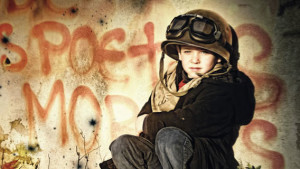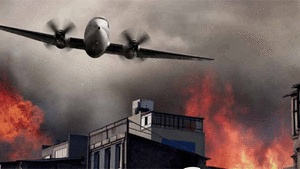Our world is at war. It isn't overyet, but soon could be. What happens then is clearly predicted, as Robert K McIver explains.
It fell to me to tell my daughter the pet cat was dead. It wasn't as if she didn't know about death. For a time when she was about four, she'd been quite interested in the topic. The road to the shop passed a cemetery, and you could generally expect some questions about “the dead place” as part of the trip.
But the theory of death doesn't prepare one for its reality. My daughter was devastated. I felt so helpless. How do you explain to a six-year-old that Peta just wasn't coming back, ever! She was gone. There was nothing that could be done to bring her back, at least, not in this world.
Death is one of the harsh realities of human existence. Saying goodbye to loved ones even for a short time is hard. Saying goodbye forever is terrible. Nor is death the only bad thing that happens to people. Most of the world doesn't get enough to eat. Some of those that do (and some of those who don't), seem to spend a disproportionate time trying to kill each other.
I shouldn't paint too gloomy a picture, because the world can be a good place to live in. Alongside the sad times come times of great happiness. The laughter shared with friends; the moment you see your beautiful bride walking down to meet you at the front of the church; the experience of picking up your new baby for the first time; the pleasure of walking into your first home; the joy of watching your hard work grow into something you can use and appreciate; the love and support of family.
Yes, life is good. That's why the pain and sorrow stand out so much. They seem wrong. Will there never come a time when funeral homes have to shut down, when the armaments manufacturers have to close their factories, and when hospitals have to go out of business for lack of patients? Yes, if the Bible is to be believed.
In fact, the Bible explains why the world is a mixture of good and bad. It began as a good place right enough. God created a perfect world. It was to be somewhere where humans could live and work in happiness. This perhaps explains why evil and suffering seems so out of place. They are intruders, invited here by the sin of Adam and Eve. The rest of human history has been a mixture of good and bad. Good, because the world started off that way, bad because of human evil, and the wider consequences of sin.
Humans are right in being impatient with evil. They are right in wanting to live where there is no suffering or death, because that is God's will for them. And they will! How this will come about is described in the book of Revelation.
Revelation graphically portrays the struggle between good and evil. Indeed, for much of the book, evil seems to be getting the upper hand. The demonic forces from the bottomless pit darken even the sun, and go out like locusts to cover the earth, which has been given into their power (Revelation 9:1-3). God's two faithful witnesses are killed by the beast arising from the bottomless pit and their bodies are left lying in the streets of spiritual Sodom and Egypt (Revelation 11:3, 7, 8). All who will not participate in the worship of the beast and its image are placed under an economic ban (Revelation 13:16, 17).
But although evil appears about to triumph, good will ultimately overcome it. God intervenes to set things right. He has, in the past, cast evil out of heaven (Revelation 12:7-8), and is soon to destroy evil on the earth. In due time, the armies of heaven arrive, and win the battle against the devil and the forces of evil (Revelation 19:11-21). Finally death and hell are thrown into a lake of fire where they will be destroyed (Revelation 20:14).
In the aftermath of this war, the world will be created anew. This is described at some length in Revelation 21:1–22:5. The earth will begin again without sin. There will be no tears because death is no more (Revelation 21:4).
This new earth will have a capital, which the Bible calls New Jerusalem. John the Revelator draws on all the special images he can to describe this extraordinary city. It has 12 gates, each one looking like a pearl. Its foundations appear to be made of precious stones, of all the colours of the rainbow. In fact, seen from afar, it must appear to be floating on a rainbow!
The city is huge. In literal terms, if that's how it's to be measured, its dimensions are over 2000 kilometres in length, breath and height (Revelation 21:16)!
But beyond size, its most distinctive feature is that Jesus Himself will live there, and that the glory going out from God will provide light for all the city and the surrounding countryside (Revelation 21:22, 23). In this way, the promise of the earthly temple will be fulfilled. God will indeed be living with his people.
Another notable feature of the city is the river of life. This flows out from the throne of God to water the countryside. Over the river grows the tree of life, whose leaves and fruit have the extraordinary property of healing (Revelation 22:1-2).
Real people will inhabit this city, and its surrounding countryside. At the resurrection, the saved will be given new-style bodies that do not grow ill and die (see 1 Corinthians 15:35-55). But because they have bodies, they will live a real existence; one that we can understand and anticipate even now.
This is a place where all evil is absent. It is a place where no father has to tell his six-year-old daughter that a pet or somebody they loved has just died. I, for one, can't wait to be there!





